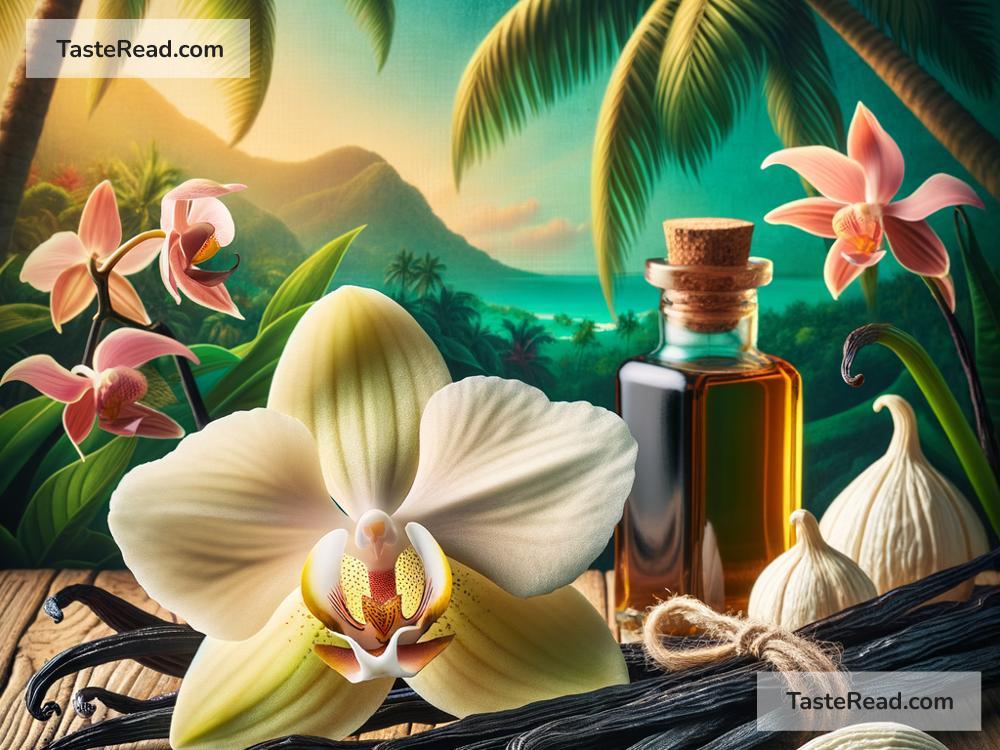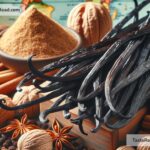The Surprising Journey of Vanilla: From Orchids to Extract
Vanilla is one of the world’s most popular flavors. From ice creams and cakes to perfumes and candles, its sweet and comforting aroma reminds us of simple pleasures. But have you ever wondered where vanilla comes from? Surprisingly, vanilla isn’t just a boring flavor tucked into an extract bottle—it’s the result of a fascinating journey that starts with delicate orchids. Let’s uncover the story of vanilla and discover why it’s so special.
Vanilla Begins with Orchids
Many people don’t realize that vanilla comes from orchids—exotic, beautiful flowers that grow in tropical climates. One specific type of orchid, called Vanilla planifolia, produces vanilla pods. These flowers thrive in places like Madagascar, Mexico, Indonesia, and Tahiti. In fact, Madagascar alone produces about 80% of the world’s vanilla.
The process of growing vanilla is anything but easy. For starters, vanilla orchids are extremely temperamental. They only bloom once a year, and when they do, the flowers stay open for just 24 hours. If the flowers aren’t pollinated during this short window, they won’t produce vanilla beans.
Pollination: A Delicate Dance
In the wild, vanilla orchids rely on a specific type of bee called the Melipona bee to pollinate their flowers. But this bee is only found in Mexico, which meant vanilla production outside of Mexico was nearly impossible for centuries.
The breakthrough came in 1841, thanks to a clever 12-year-old boy named Edmond Albius. He lived on the island of Réunion and discovered how to hand-pollinate vanilla orchids using a simple technique. By carefully transferring pollen from one part of the flower to another, Edmond revolutionized vanilla farming. This method is still used today, especially in places like Madagascar.
Hand-pollination is incredibly labor-intensive. Each flower must be pollinated by hand, often by skilled farmers with tiny tools. Just imagine: a single vanilla pod begins with a farmer painstakingly pollinating one orchid flower.
Patience Pays Off: Growing Vanilla Beans
Once a flower is pollinated, it transforms into a green pod. This pod looks nothing like the dark, wrinkly vanilla beans you might recognize. The pods take around 9 months to grow and mature on the vine. Throughout this time, farmers must carefully tend to the plants to ensure they remain healthy.
When the pods are ready to harvest, the journey is far from over. Straight from the vine, fresh vanilla beans are practically odorless—they don’t have the sweet vanilla scent we all love. To unlock their flavor, the beans need to go through a long and precise curing process.
The Magic of Curing
Curing vanilla beans is a time-consuming and delicate art. First, the beans are blanched in hot water to stop them from rotting. Then, they are sun-dried and sweated over several weeks or even months. This process involves wrapping them in cloth during the day and exposing them to sunlight at night.
During curing, chemical reactions inside the beans develop their signature vanilla scent and flavor. Farmers must monitor the drying process closely, making sure the beans don’t dry out too quickly or get moldy. The end result is dark, glossy pods filled with tiny black seeds—these are the vanilla beans used in cooking and baking.
From Beans to Extract
Once cured, vanilla beans are either sold whole or turned into vanilla extract. Making extract involves soaking the beans in a mixture of alcohol and water. The alcohol pulls out the flavor compounds, creating the liquid extract you find in stores. This extract is later used in recipes to add depth and sweetness to foods and beverages.
The price of real vanilla extract might seem high, but there’s good reason for that. The process of growing, pollinating, harvesting, curing, and extracting vanilla takes an enormous amount of time, care, and effort. A single vanilla bean can cost several dollars, especially if it’s sourced from regions known for high-quality vanilla.
Vanilla’s Complex Journey
Vanilla’s journey from orchid to extract involves craftsmanship at every stage. It’s no wonder that vanilla is the second-most expensive spice in the world (after saffron). Despite this, many people don’t know the effort behind the flavor they enjoy in everyday items.
Interestingly, because real vanilla is so costly, many products use artificial vanilla, often labeled as “vanillin.” While synthetic vanillin can mimic the flavor of vanilla, it doesn’t come close to the depth and complexity of the real thing. If you ever get the chance to taste authentic vanilla pods or extract, you’ll appreciate the difference.
The Next Time You Use Vanilla
The next time you add vanilla extract to your cookies or drizzle it into your coffee, take a moment to think about the journey it took. It started with a fragile orchid, pollinated by hand, carefully grown, cured for months, and transformed into the warm, fragrant flavor we all know and love.
Vanilla may seem simple, but it’s far from ordinary. Its surprising journey reminds us to appreciate the craftsmanship and hard work behind the ingredients that make life sweeter.


